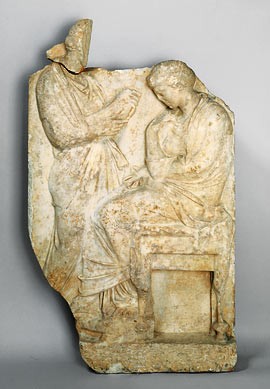The Quebec Collection
Despite the widespread dissemination of the Diniacopoulos collection, a large portion of its Greek and Roman artifacts remains in Canada. The largest group of these pieces, comprising 74 objects, was purchased by the ministère des Affaires culturelles du Québec and subsequently housed in the Centre muséographique of Université Laval in Quebec City. This collection was published in a brief catalogue (1983) by Gisèle Deschênes-Wagner, but aside from sporadic visits by scholars interested in studying individual pieces, the collection had been neither systematically published nor exhibited as a whole. It remained largely unknown, even within Quebec. In 2002, the collection was moved to the Musée national des beaux-arts du Québec, and in 2003 it came to the Montreal Museum of Fine Arts on a long-term loan by agreement with the Musée national des beaux-arts du Québec.
These artworks were presented to the public in 2004 both as exhibitions in the Mediterranean Archaeology gallery of the Montreal Museum of Fine Arts and as a two-day conference held at Concordia University; the proceedings of this conference that addressed the Quebec collection were published in this year (John M. Fossey and Jane E. Francis, The Diniacopoulos Collection in Quebec).



 Grave stele
Grave stele